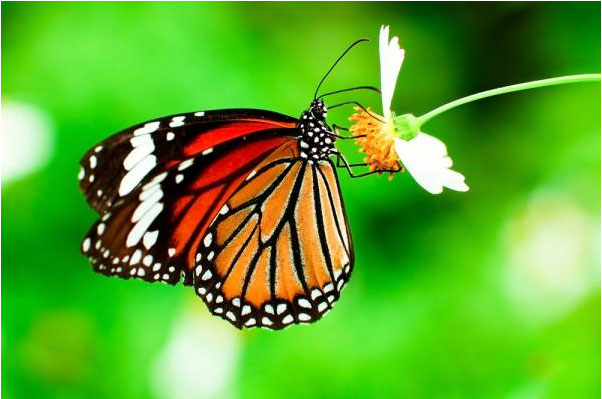Increased CO2 levels threaten princess butterflies
New studies show that increasing levels of CO2 are reducing the healing effect of earring plants for princess butterflies.
Princess butterflies only eat the leaves of earrings. Caterpillars accumulate bitter toxins found in leaves, called cardenolides , to help them avoid predators.
In field experiments, scientists at the University of Michigan planted four species of earring plants in different atmospheric conditions. These plants are exposed to different levels of CO 2 concentrations. After that, the leaves were analyzed before being fed to the monarch butterfly.

The increased concentration of CO 2 reduces the life of the monarch butterfly.
Researchers found the largest cardenolite species in normal growth conditions, and they would produce a lower amount of protection when exposed to higher CO 2 concentrations.
Scientists found that caterpillars eating earrings exposed to high levels of CO 2 were less likely to tolerate a more common parasite. The life of the monarch butterfly also decreases on average by one week.
Researcher Leslie Decker said: 'In this case, we discovered an earlier, unrecognized mechanism, due to the ongoing environmental change, which is the level of CO increase. 2 - may affect disease in the butterfly moth '.
Researchers believe that increased concentrations of CO 2 may reduce pharmaceutical compounds found in different plants, including compounds used by humans to create many drugs.
Princess butterflies have been threatened by habitat loss and other environmental hazards. Now, the latest findings - published in Ecology Letters - suggest they will be more susceptible to parasitic infections in the future.
- Beautiful photo: A flock of princess butterflies perched on trees
- Forest princess butterflies rarely see thousands of children in Sapa
- New discoveries about the migration habits of monarch butterflies
- Beautiful butterflies
- Butterflies find drugs to cure diseases
- What happens if we breathe twice as much oxygen now?
- Gorgeous tattoos on Siberian princess body
- Butterfly's wicked secret
- Butterflies are beautiful like fairytale in Mexico
- Giant butterflies appear much in Soc Trang
- Strange discovery in the tomb of Egyptian princess
- Fluttering because of dozens of butterflies
 Why do potatoes have eyes?
Why do potatoes have eyes? 'Tragedy' the world's largest carnivorous life: Death becomes ... public toilet
'Tragedy' the world's largest carnivorous life: Death becomes ... public toilet Tomatoes were once considered 'poisonous' for 200 years
Tomatoes were once considered 'poisonous' for 200 years Detecting microscopic parasites on human face
Detecting microscopic parasites on human face